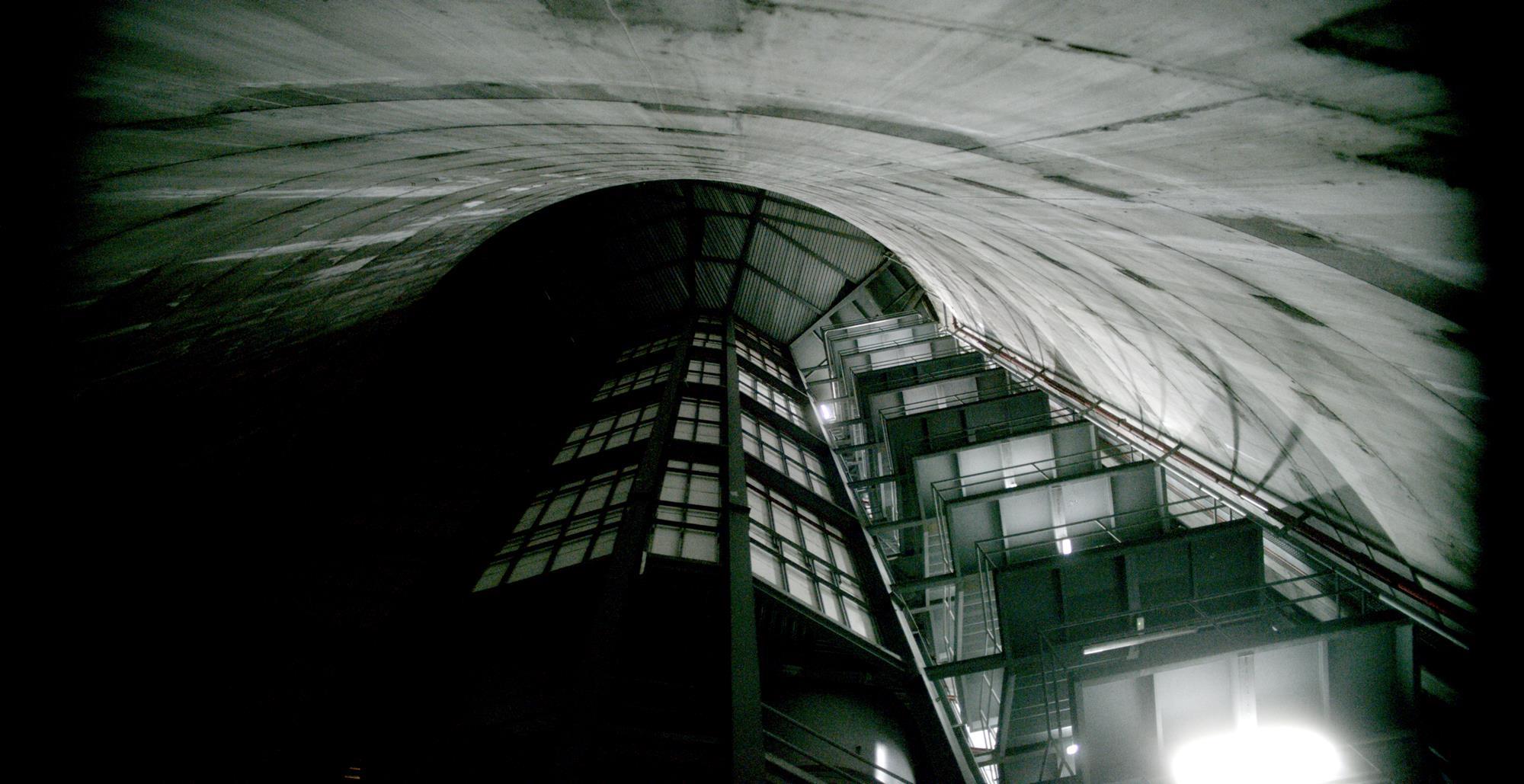A city symphony from beneath, owing as much to the documentaries of Dziga Vertov as to the work of the Harvard Sensory Ethnography Lab (notably 2012’s Leviathan), The Hidden City is a film which is felt and sensed more than it is watched and understood.
Victor Moreno’s documentary explores the textures and life (in the widest, most open sense) found in subterranean Madrid, but this isn’t apparent from its opening moments; there are no title cards, no interviews, no context. In fact, there are passages in this film which let a viewer drift, in an unhurried way, unable to recognise precisely what is being shown on screen. It takes upwards of a minute for the opening shot, which resembles nothing more than starlight dotted around the blackness of space, to reveal itself as a shiny, slippery wall.
A slow-moving camera treads through the tunnels and crevices of this world adjacent to Madrid, essential to it but unacknowledged by its residents. The film accompanies the efforts of a team constructing train-tracks, another winding down sewage pipes; captures the visual and aural oddness of the spaces; registers non-human presences, in rats, cats, owls, or cockroaches; and attends to those moments when the world outside seems close enough to touch. One pair of shots haunts for this reason: looking upwards, at a drainhole, the light blocked by peoples’ feet stamping over it, unaware of what’s below — and the reverse, the light that makes its way into the darkness, assuming the form of a twisting column of dust.
It’s hard to overstate the wonderful effects of these images, how they take a viewer out of a usual comprehension of space, how they slow things down almost to a halt. An early shot, close in proximity, looks at a viscous, oleaginous, calcifying white mound of something, moving quickly to work being done on a train, the saws sending flywheels of sparks off into the tenebrous night. The play with light and enveloping shadow is so strong and fast it loses its concrete reality, it begins to resemble a drawing of fire.
The film’s abstractions are found in its editing, too: transitions are lucid and imaginative, one set of lights begin to blend into another so easily it’s occasionally a challenge to tell when the cut took place. But if this all sounds too impressionistic, know that The Hidden City’s artfulness carries a worthwhile purpose: to demonstrate that these worlds — and they are everywhere — are part of us, and we are part of them.
